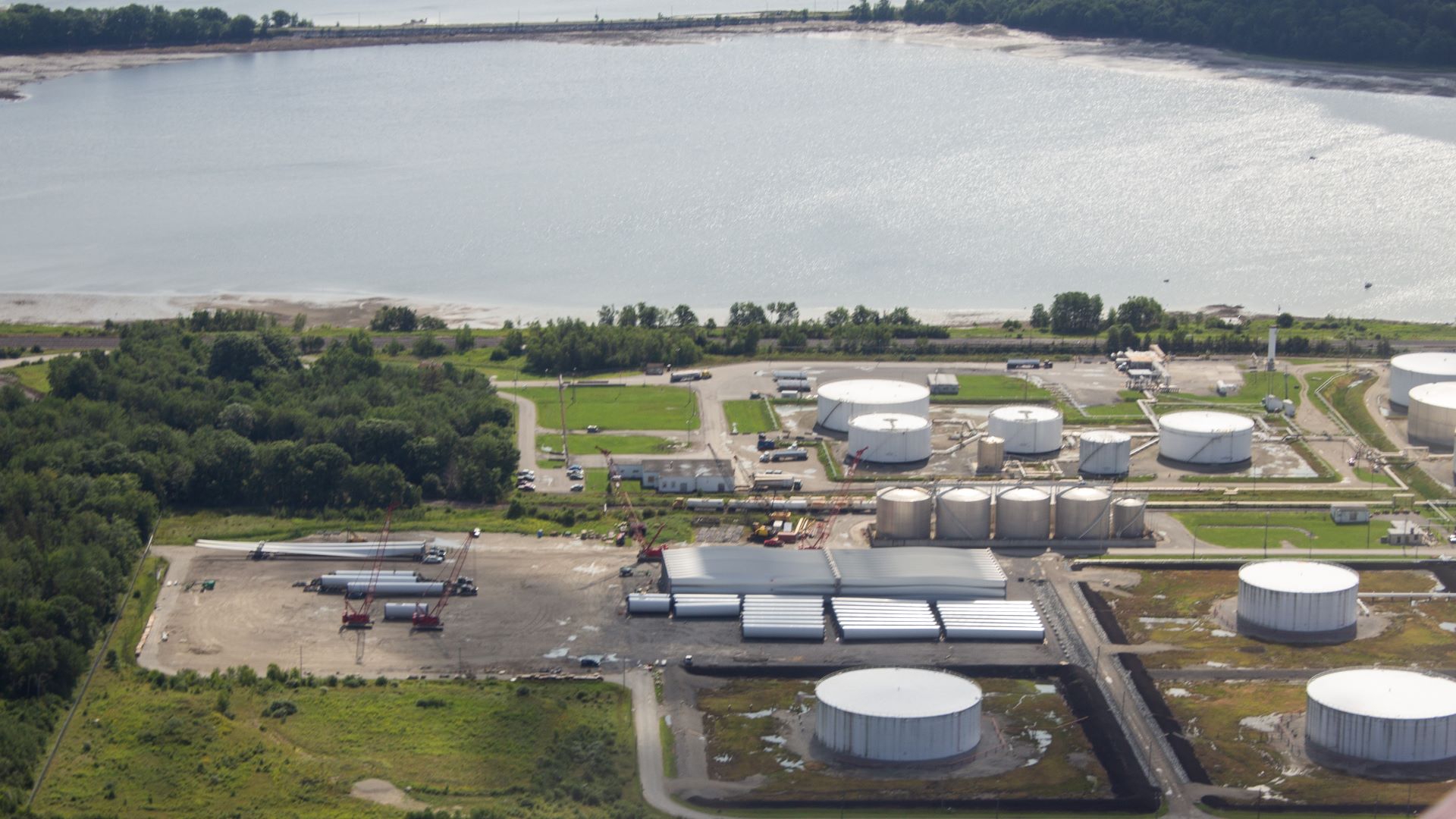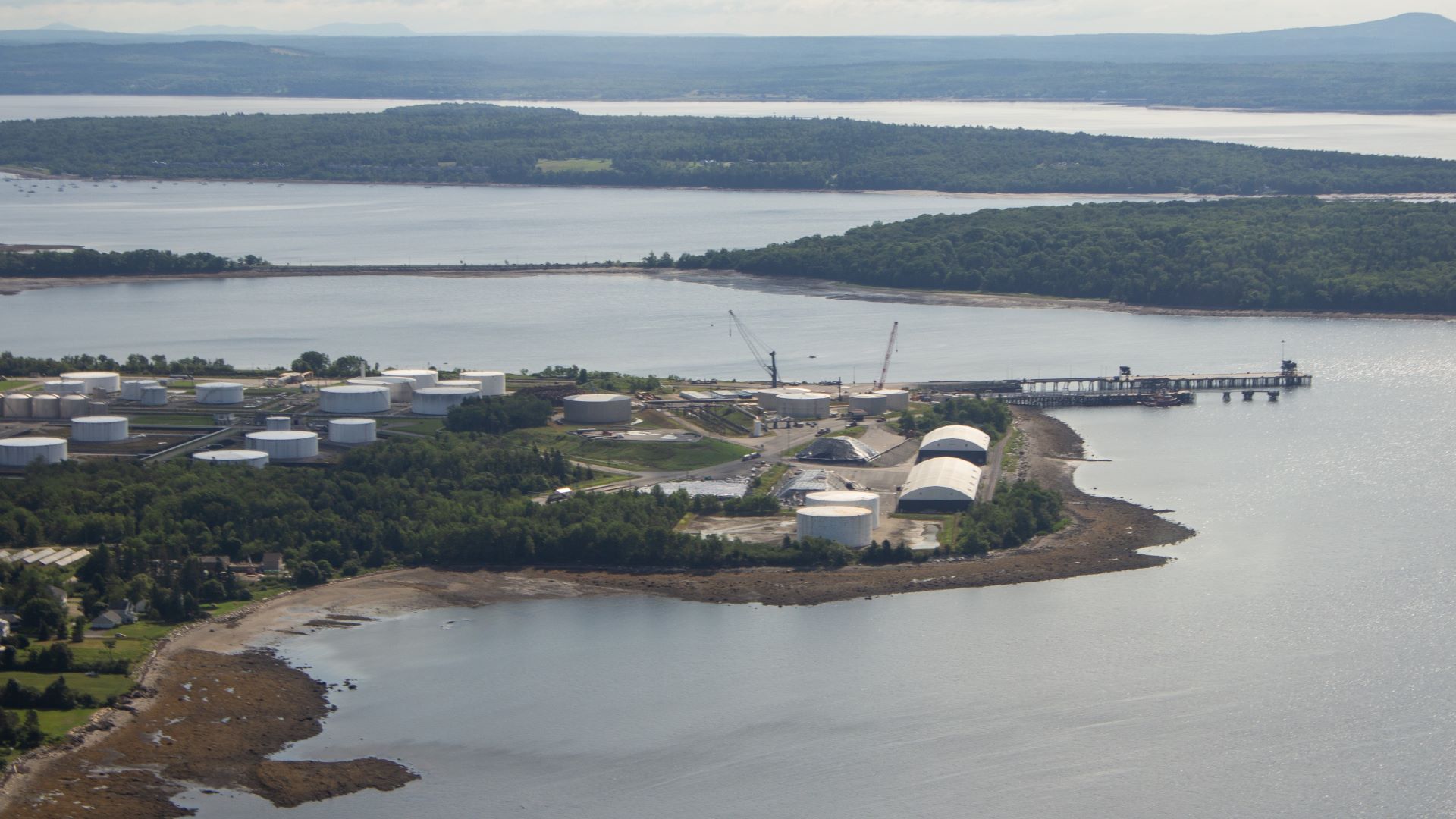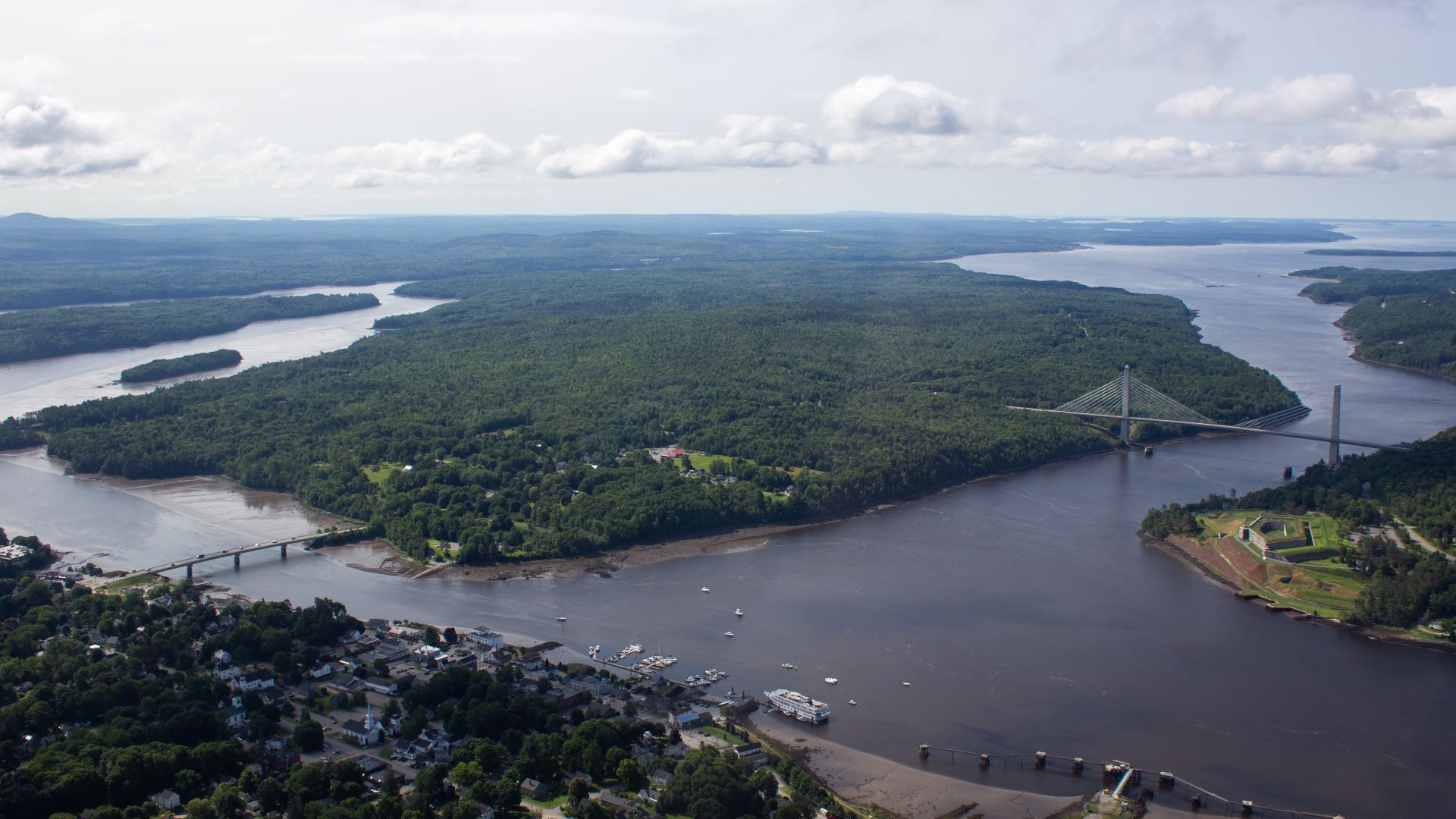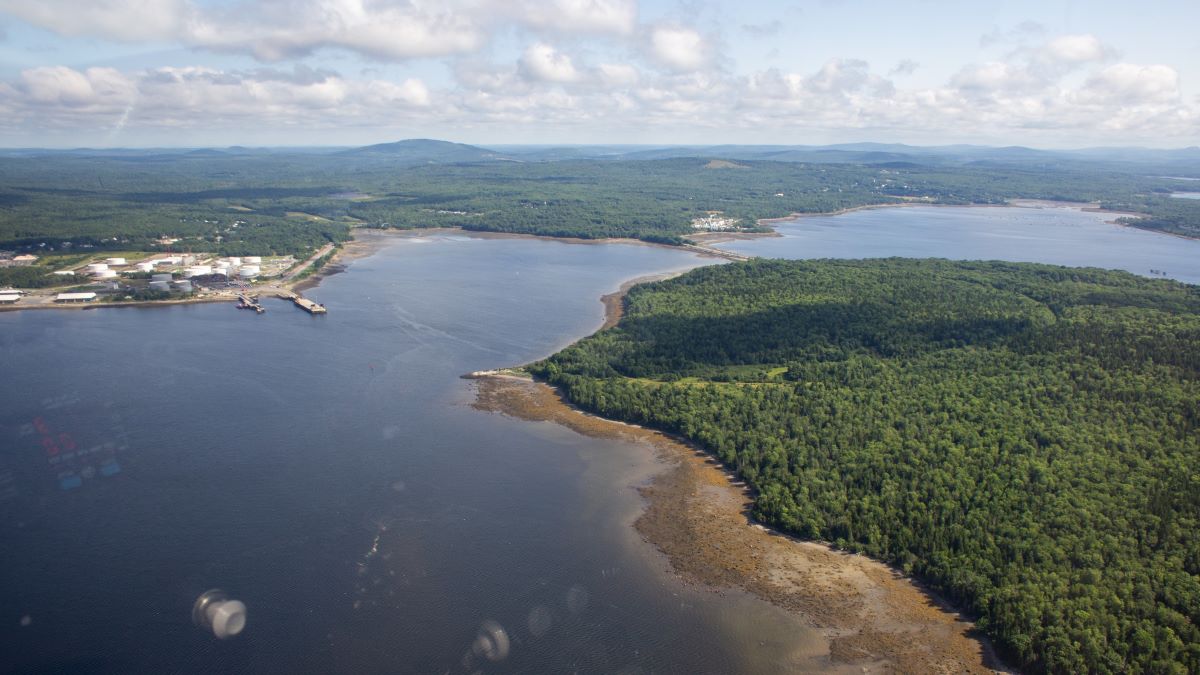A bird’s-eye view can show you a lot about a place — its size and shape, its hidden contours, and the water, forests, roads and development around it.
I got this landscape-level view of part of Penobscot Bay last week. I flew in a small propeller plane between Belfast, Searsport and Stockton Springs, up to the mouth of the Penobscot River where it flows from Bucksport around Verona Island, and back again.
The flight was organized by opponents of Maine’s proposed offshore wind port on Sears Island and facilitated by Lighthawk, a nonprofit that runs flyovers for conservation groups with local volunteer pilots.
I had flown with Lighthawk once before, in 2019, to see the effects of a king tide — exacerbated by rising seas and a warming world — on New Hampshire’s Seacoast.
Maine officials and clean energy advocates see launching the state’s floating wind industry as a key solution to lessening those climate impacts, and say the proposed offshore wind port will bring local benefits to the community.
A view of competing sites
On my Penobscot Bay flight, we flew from Belfast’s tiny airstrip out over Sears Island, which is mostly undeveloped but still accessible by road. We could see the part of the island where the state wants to build the wind port, an area about one tenth the island’s size.
We saw the industrial development that surrounds the island, including GAC Chemical to the northeast and Sprague Energy’s Mack Point cargo and fuel terminal to the southwest.


Mack Point is where opponents of the Sears Island project say they want the port built. It was considered by the state’s Offshore Wind Port Advisory Group over the past two years. Sprague has since proposed a new approach to using the site for the port, which groups like Friends of Sears Island are pushing for.
Formal federal permitting for the port will include alternatives analyses. But the state has said Mack Point would be prohibitively expensive, complicated and restrictive for the kind of port they want to build.
Flying overhead, we could make out Sears Island’s roads, trails and cell tower — then, toward the head of the bay, farms, solar arrays, houses and harbors.

Sears Island looked tiny compared to Verona Island, with its eye-catching Penobscot Narrows Bridge. We made a U-turn and headed back to Belfast.
‘Confident that it would never be built’
David Italiaander, who sits on the Friends of Sears Island board, was waiting for the Lighthawk flight after mine. He said the aerial view shows the island as “an intact ecosystem” that contributes “tremendously” to Penobscot Bay, with eelgrass beds, vernal pools, wetlands, forests and a diverse range of species.
I asked him why, given this perspective, his group signed onto the 2007 consensus agreement that reserved part of the island for a future state “cargo/container” port or “marine transportation” use.
“This is neither,” Italiaander said. “This is a manufacturing facility that will greatly damage the island far more than even a cargo port.”
According to the state’s recent application for $456 million in federal funds to help build the Sears Island port, the facility would be mostly used to stage, assemble and potentially erect floating turbines to be towed and installed offshore. It would also be used to fabricate floating bases.

Italiaander suggested he was comfortable with the 2007 agreement because he didn’t think it would really be used: “The thing about a port is that it’s commercially unnecessary,” he said, “and I’ve always been confident that it would never be built.”
The 2007 agreement says a few other things that are worth highlighting: It says the state will give preferential consideration to Mack Point as an alternative to a port on Sears Island, mostly by exploring whether Mack Point would be feasible for such a use. It does not say the state will only build on Mack Point and not Sears Island.
The agreement also lists coal and nuclear power, liquefied natural gas and chemical manufacturing as uses that stakeholders agreed were inappropriate for the island.
A note about context
Throughout my flight, I was thinking about the heavily polluting industrialization that mostly Black, mostly low-income communities on the Gulf Coast of Texas and Louisiana have endured for decades as they produce the nation’s fossil fuels, fertilizer, plastics and more, including in historic areas.
Maine imports much of its heating oil from the Gulf Coast. Offshore wind development would help us use more electric home heating without less added emissions from the power grid — while helping alleviate the need for far more environmentally and locally damaging petrochemical build-out in marginalized places, many of which have been described as fossil fuel sacrifice zones.
Of course, this is just one way to look at the Sears Island saga. This recent Bangor Daily News piece about Sears Island focuses on locals’ deep love of the ecosystem there, and their fears about what could happen to that ecosystem if about a tenth of the island is turned into an offshore wind port.
In the story, advocates repeated a common refrain: that the island is special in part because it is free for the public to access. It bears noting that there are countless free parks and conservation areas all along the Maine coast, some of them on islands, many of them further from industrial areas than Sears Island.
But this is a subjective issue, one about personal priorities. It challenges certain environmental values, putting them in perceived conflict with one another. For a story a couple weeks ago, I talked to Mainers grappling with what they’re willing to sacrifice in order to further local and global climate and community benefits.
Many people told me, in varying tones, that my recent story was unusually “nuanced” for an offshore wind article. I think nuance, climate context, interrogation and reflection are what this issue demands — which is why I wanted to see Sears Island, and its context in the landscape and the planet, from the air.







